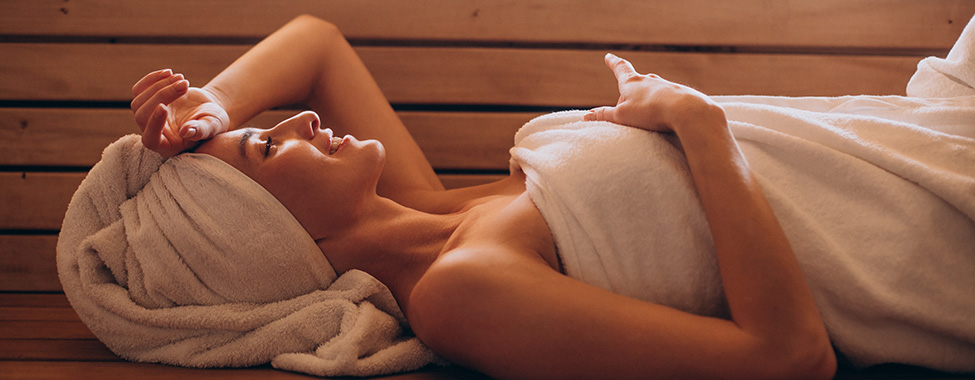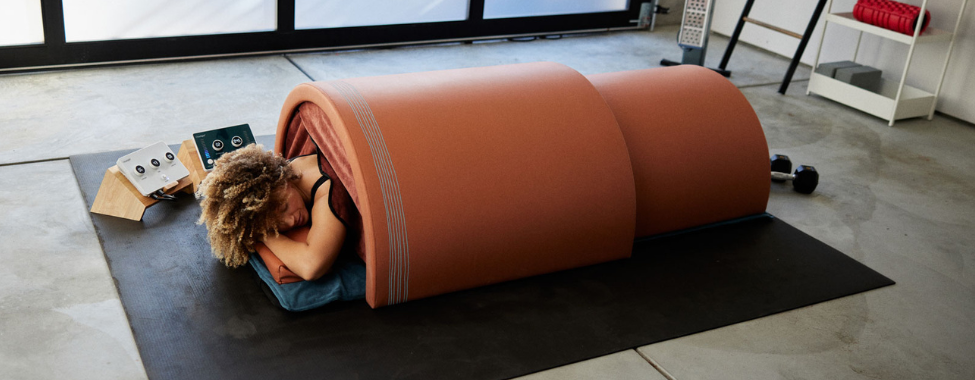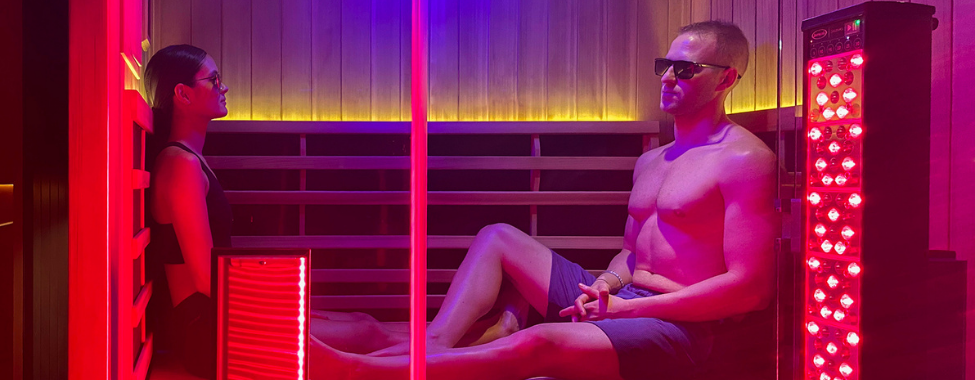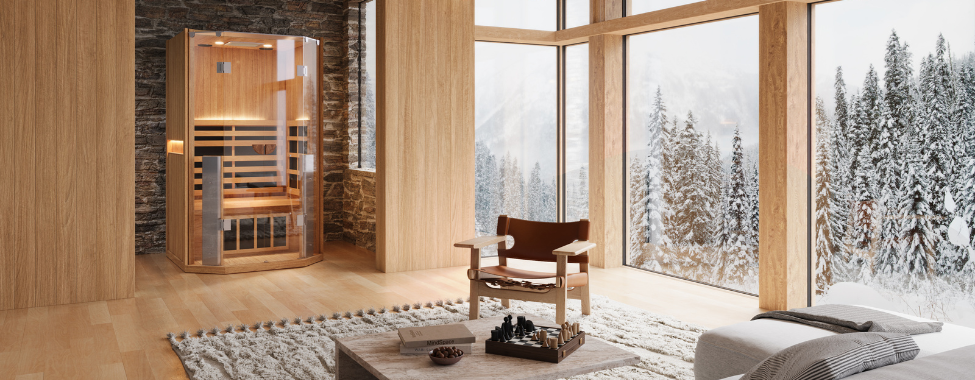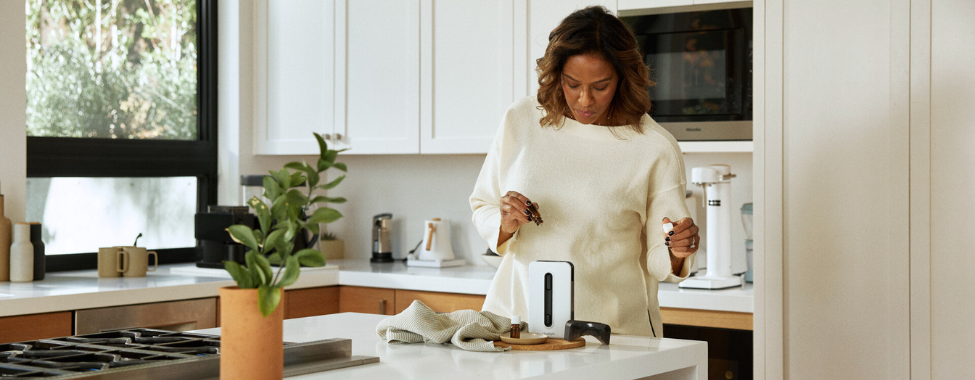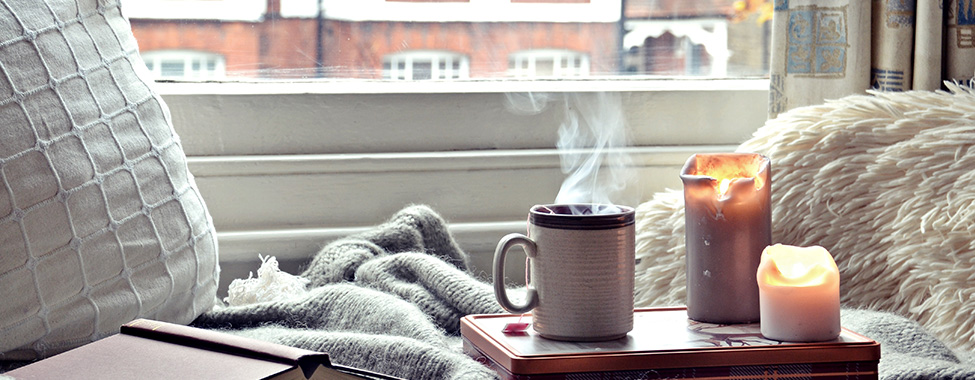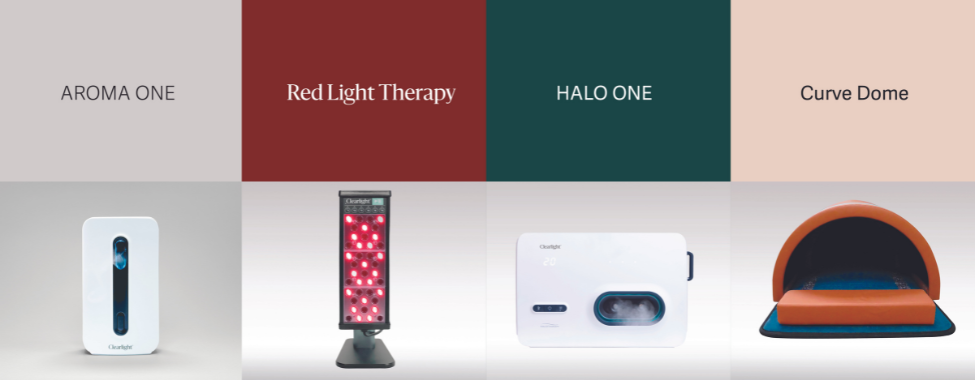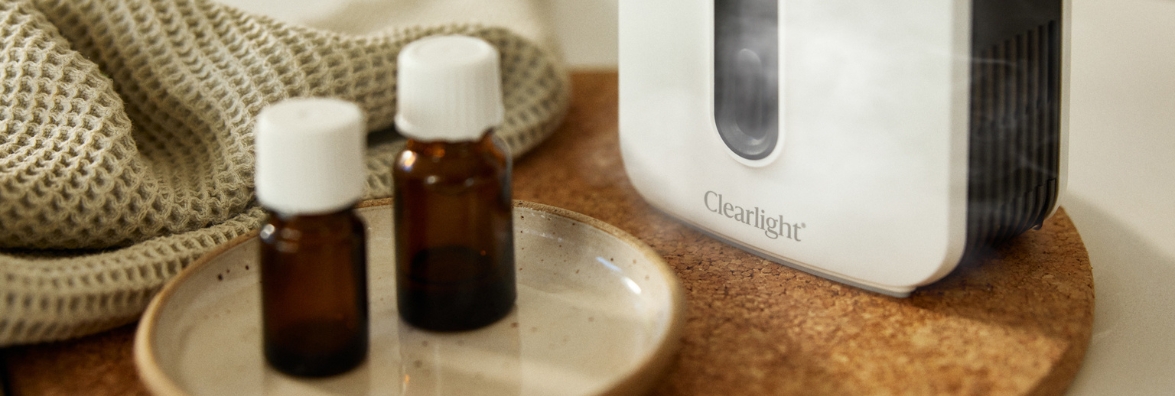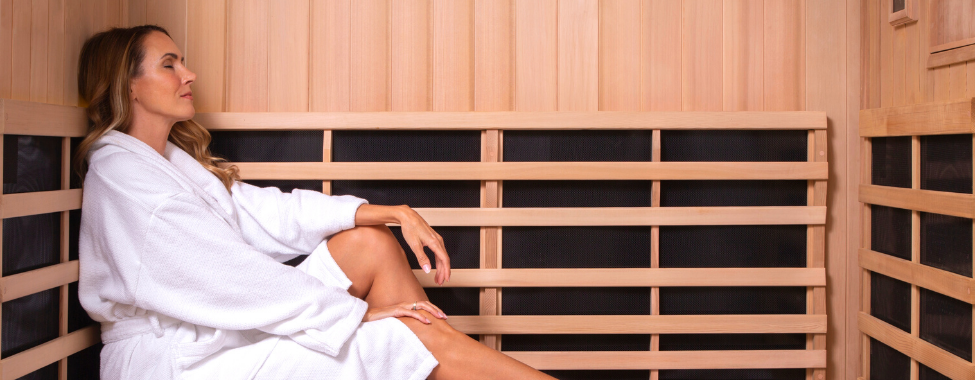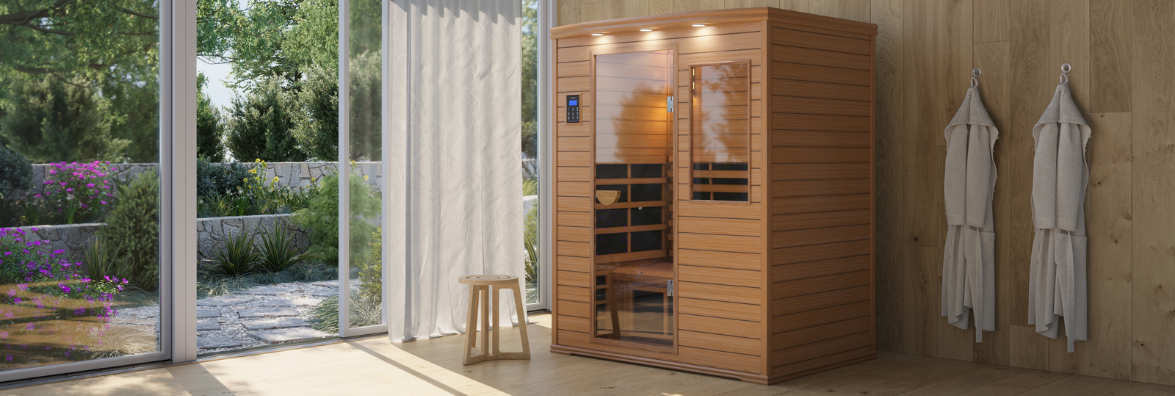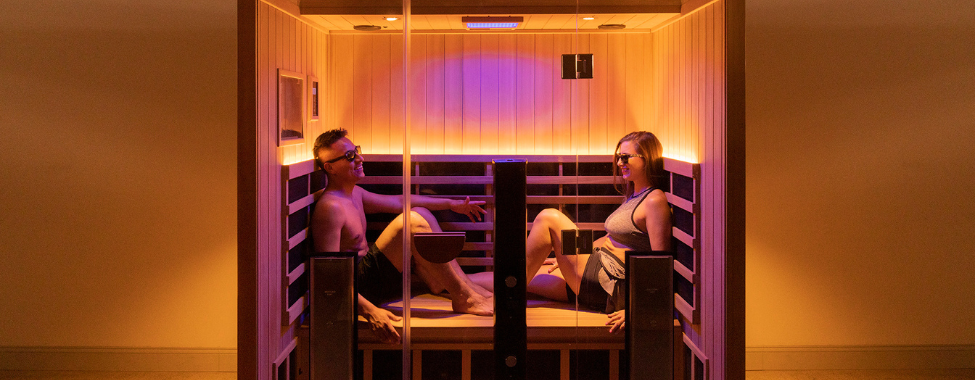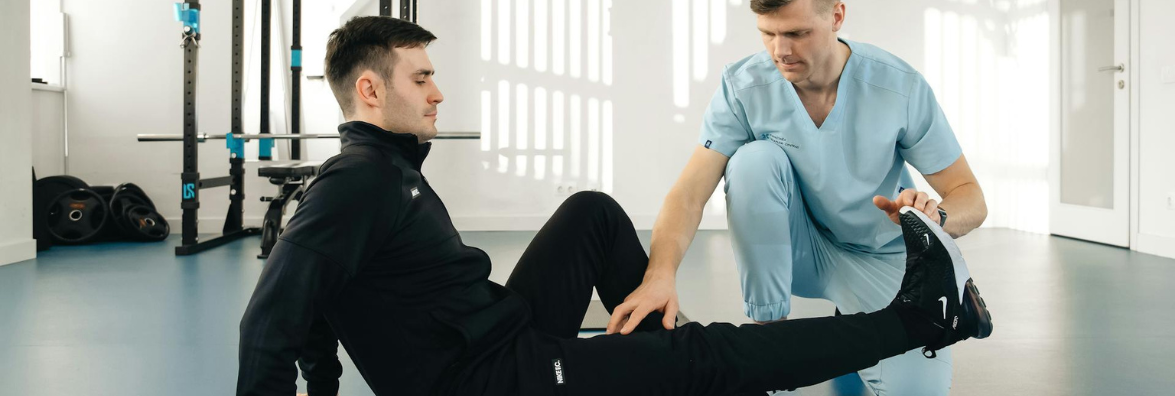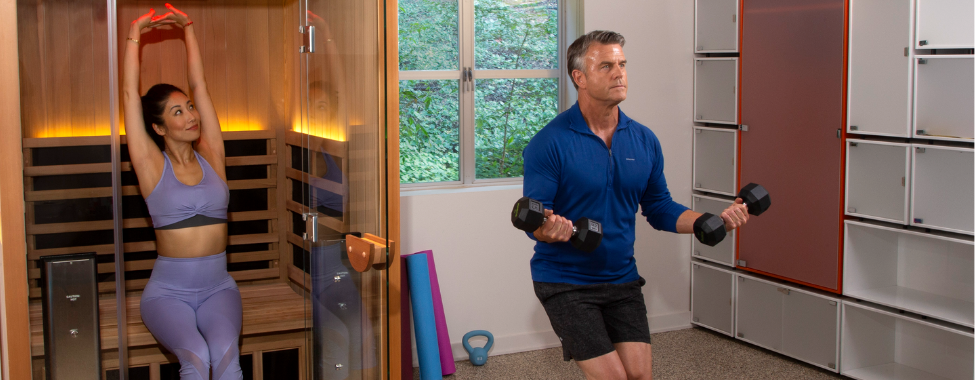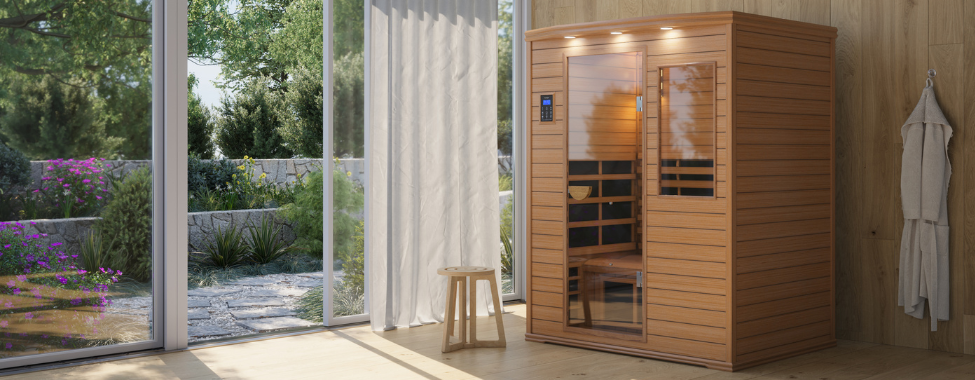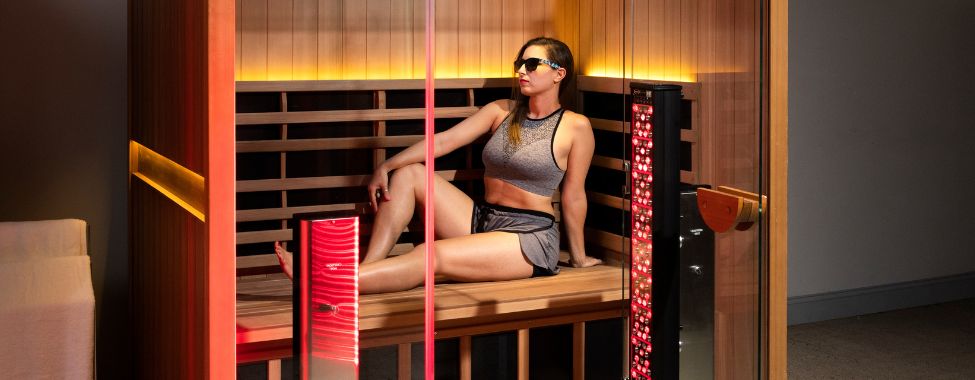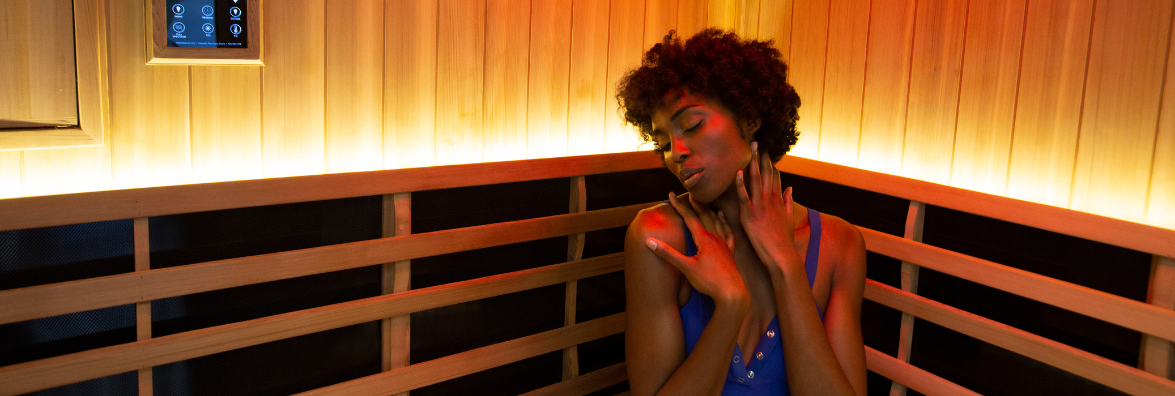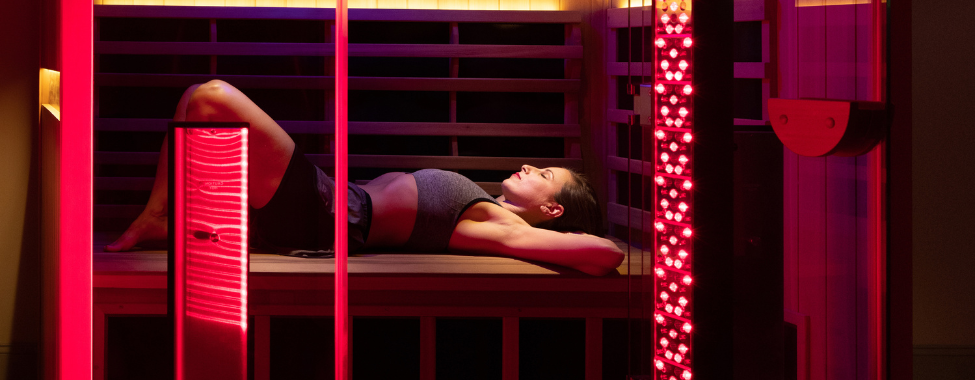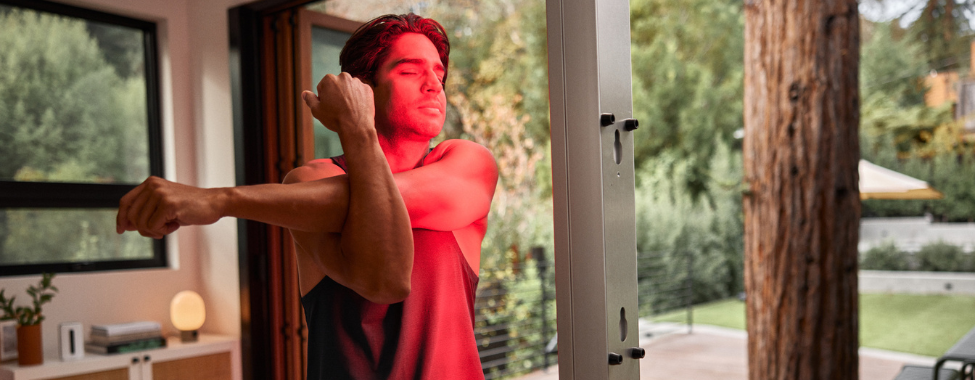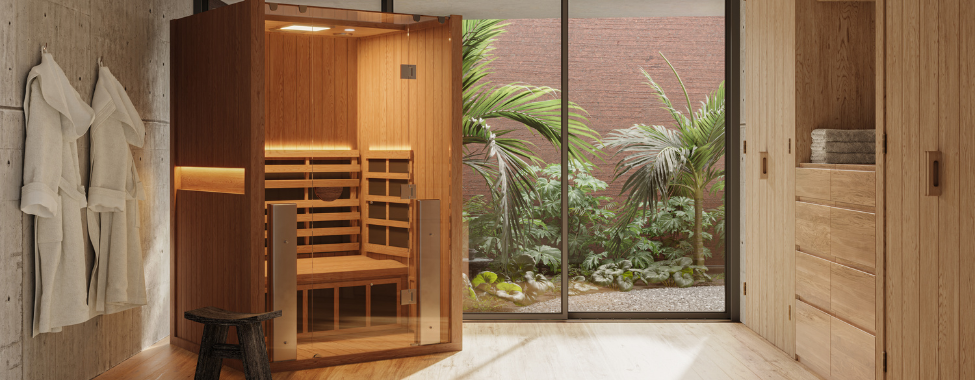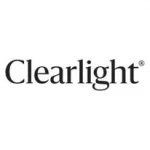Wellness has entered a new era where heat and cold are no longer viewed as separate tools, but rather as partners in recovery. Thermotherapy (heat therapy) and cryotherapy (cold therapy) have been widely used for decades. What’s new in 2025 trends is the surge of interest in contrast therapy, the strategic alternation of hot and cold to enhance circulation, reduce inflammation, and accelerate recovery. This shift reflects both scientific validation and consumer demand.
As Raleigh Duncan, founder of Clearlight® Saunas, explains, “Moderate amounts of stress can actually improve the way we feel and act. ‘Contrast bathing,’ or going back and forth between sauna and cold water, is the perfect way of producing moderate stress without the harmful effects of the more common daily stress we’re all familiar with. It can actually be an antidote to chronic stress.”
With cold plunges becoming a centerpiece of at-home wellness and infrared saunas expanding in popularity, contrast therapy has become a cornerstone of modern recovery and performance rather than a niche ritual.
What is Thermotherapy?
Thermotherapy, also known as heat therapy, is the practice of applying heat to the body for therapeutic benefits. Heat therapy can be as simple as taking a warm bath, but can also be more intensive with practices such as infrared sauna use. Unlike cold therapy, heat can safely be applied for prolonged amounts of time to provide extended relief.
Heat can be applied through two main types of thermotherapy:
Direct Contact
Direct contact heat therapy is the easiest method to do at home. This method requires you to apply either moist or dry heat directly to the afflicted area to deeply heat the muscles in the area. Heating methods include heating pads, hot baths, and even warming topicals. While there is debate whether dry or moist heat is more effective, clinical studies have not noted a significant difference.
Whole Body
Whole body heat therapy surrounds the body in warmth rather than targeting a specific area. This can be achieved through environments like saunas, steam rooms, hot yoga, or heated baths. By raising the body’s overall core temperature, ambient heat promotes circulation, relaxation, and recovery. A popular form of environmental heat is infrared therapy, which uses near, mid, and far-infrared wavelengths to penetrate deeper into tissues to offer a layered heating effect that supports recovery and overall wellness.
Heat therapy should not be used if the afflicted area is bruised or swollen, and open wounds should be avoided. Those with conditions such as diabetes, vascular disease, multiple sclerosis, dermatitis, heart disease, and deep vein thrombosis are at higher risk of injury when using thermotherapy, so discuss with your doctor before attempting.
Thermotherapy Benefits
One of the most prominent benefits of heat therapy is the treatment of muscle tension. If you have ever suffered from a sore back or a pulled muscle, you know just how effective heat therapy for back pain is and how much relief can come from a hot pad or a soak in the tub. This is because the application of heat helps your muscles stretch by increasing tissue extensibility, causing any stiff or tense muscles to relax.
Heat also triggers the body’s response to heal by increasing blood flow to affected areas. This is helpful in speeding up the recovery time of an acute injury, decreasing the discomfort from migraines and headaches, and simply helping the body relax for general stress relief or help with sleep.
More intensive thermotherapy practices create a sudden increase in the body’s core temperature and trigger the production of heat shock proteins, or HSPs, to protect your body from perceived stress. As this happens, muscles reach proper function while the heat shock proteins begin to guard muscles from potential trauma. This helps your body repair and rebuild any damaged areas. Studies show that incorporating heat therapy for cancer treatment can enhance the treatment process.
Heat shock proteins are especially helpful in reducing recovery time and enhancing muscle mass for those who are active. You can activate heat shock proteins by spending some time in an infrared sauna or going all-out at the gym. Just be sure to hydrate after!
The Infrared Sauna Trend
Infrared saunas have moved from wellness luxury to wellness essential. Unlike traditional steam or dry saunas, infrared uses specific light wavelengths to gently warm tissues, providing cardiovascular and recovery benefits at lower ambient temperatures. In 2025, consumers are drawn to infrared saunas for their accessibility, comfort, and versatility. They are especially popular among those seeking relaxation, pain relief, and circulation improvements without the overwhelming heat of conventional saunas.
“Infrared saunas are beneficial in so many ways,” says Duncan. “Regular use can reduce stress, relieve pain, boost immunity, improve sleep, and even help lift depression by releasing dopamine, serotonin, and endorphins. Infrared is also an exercise mimetic – it works the heart and circulatory system like a moderate workout.”
The global sauna market was valued at USD 859.5 million in 2023 and is projected to reach USD 1.27 billion by 2030. Clinical findings also support the trend: recent research shows that post-exercise infrared sauna use supports recovery without hindering muscle adaptation. Other work suggests infrared exposure may help reduce symptoms of depression in clinical populations.
Beyond research, wellness trend reports show growing demand for in-home infrared units and portable models, making sauna use more accessible than ever. As consumers seek holistic recovery solutions, infrared is now marketed as a daily tool rather than an occasional luxury. As Duncan adds, “We’re seeing infrared saunas take center stage in the home health movement. The idea of a home gym has expanded into a sanctuary – a space to heal, strengthen, recover, and rejuvenate.”
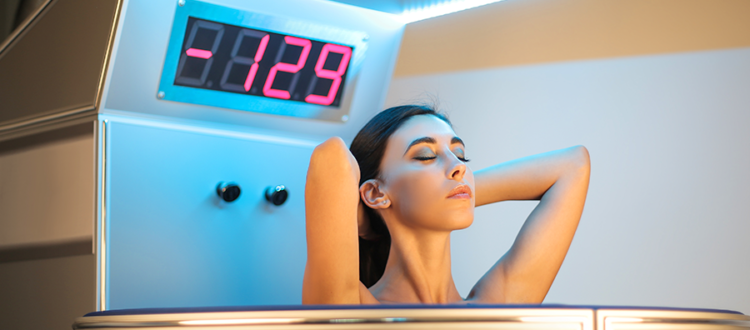
What is Cryotherapy?
Cryotherapy, also known as cold therapy, is the practice of applying cold temperatures to the body to stimulate healing. This practice can be applied in specific areas for relief, and has also become a popular whole-body therapy. Due to the extremely cold temperatures and related injury risk, it is advised to practice cryotherapy sessions in short intervals.
Types of cold therapy treatments include:
Whole Body
Whole body cryotherapy has been an up-and-coming treatment that exposes the body to extremely cold temperatures for two to four minutes. Cryochambers use liquid nitrogen and refrigerated air to create the chilling effect. Another increasingly popular option is the cold plunge, where the entire body is immersed in chilled water, typically ranging from 38–55 °F. Unlike cryochambers, cold plunges rely on water immersion rather than air cooling, but both approaches trigger vasoconstriction, reduce inflammation, and stimulate recovery.
Direct Contact
This cold therapy approach places cold temperatures on specific areas of the body to numb affected areas and alleviate symptoms of discomfort. Ice packs and cold spray anesthetics are both designed to provide short-term pain relief.
Cryosurgery
Cryosurgery is the practice of using extreme cold to destroy damaged or diseased tissue. This can be used on common skin disorders to remove surface conditions. Additionally, cryotherapy has been used to eliminate unwanted fat through fat-freezing procedures.
Extremely cold items should never have direct contact with the skin without medical supervision, and require a protective barrier. Those with diabetes or nerve conditions should not use cryotherapy to avoid injury and nerve damage.
Benefits of Cryotherapy
Two of the main benefits of cold therapy are its anti-inflammatory and numbing effects. The coldness helps numb irritated nerves and decrease blood flow to swollen areas, which then makes recovery more manageable. This can be used for injuries, arthritis, and migraines. While masking the symptoms may not be the final treatment of the issue, pain relief makes recovery efforts more effective.
Cryosurgery takes a more permanent approach. This procedure uses extreme cold to freeze off unwanted tissue with the use of liquid nitrogen, and is commonly used to remove skin conditions such as moles, warts, atopic dermatitis, skin tags, and more. This practice is also used to target low-risk tumors for cancer treatment.
In contrast with the heat shock proteins produced by hyperthermia, cold shock proteins, or CSPs, are triggered by an extreme drop in core body temperature. Cold shock proteins are more easily produced than heat shock proteins, and can be triggered by something as simple as a cold shower.
These CSPs are believed to boost your immune system and improve the overall function of the body. The extreme temperature of intensive cryotherapy helps your body learn to adapt to stress and helps build your tolerance. Additionally, cold shock proteins have been thought to slow the progression of neurodegenerative conditions such as Alzheimer’s disease.
The Cold Plunge Trend
Cold plunges have grown from a niche recovery practice into a global wellness movement. What once belonged to elite athletes and Nordic traditions has become a daily ritual for everyday wellness seekers. In 2025, cold immersion is being framed not just as a recovery tool but as a way to build mental toughness, emotional resilience, and longevity. Many report that the shock of cold water improves clarity, reduces stress, and promotes a sense of calm after initial discomfort. This cultural shift has turned the cold plunge into both a social and solo practice.
“Cold plunging is one of the healthiest ways to produce moderate stress,” Duncan says. “It constricts blood vessels, reduces inflammation, and energizes both body and mind. When alternated with sauna use, the body becomes more resilient and learns to adapt more efficiently.”
The cold plunge tub market was valued at USD $318.6 million in 2023 and is projected to reach USD $426.8 million by 2030. Modern cold plunge tubs reflect this surge in demand. Today’s models feature app-connected controls, water-chilling technology, self-cleaning filtration, and sustainable design. Some brands are developing “smart plunges” that track session time, water temperature, and even heart rate to optimize recovery. Market analysts project that the cold plunge sector could soon rival saunas in popularity and revenue.
“I use a cold plunge at home alongside my infrared sauna,” says Duncan. “Alternating between heat and cold – what I call state shifting – is a healthy way to produce moderate stress. It can reset the balance between the body’s ‘fight or flight’ and ‘rest and heal’ systems, helping us recover from chronic stress.”
Contrast Therapy: The Best of Both Worlds
Contrast therapy combines the unique effects of heat and cold in a single routine. By alternating between vasodilation (from heat) and vasoconstriction (from cold), the body experiences a “vascular pump” or flushing effect, which improves circulation, reduces swelling, and accelerates recovery. This back-and-forth temperature shift has been practiced for centuries in Nordic, Japanese, and Indigenous bathing traditions, but only in recent years has science begun to confirm its benefits.
“Going from sauna to cold and back a few times makes the body more resilient as it’s called upon to react quickly from one extreme to the other,” Duncan explains. “Both heat and cold stressors release BDNF – brain-derived neurotrophic factor – which supports neuron growth and brain plasticity.”
A 2025 scoping review reported consistent improvements in pain, joint range of motion, and swelling in athletes and clinical patients. In sports performance, the method is gaining traction as a reliable recovery tool. But it’s not just athletes who are turning to contrast therapy. The practice has exploded in popularity across spas, gyms, and even homes. Global Wellness Institute named it one of 2025’s biggest wellness trends, with dedicated bathing clubs, mobile sauna units, and backyard cold plunges making the practice more accessible than ever.
As Duncan notes, “Happiness may well come in time by practicing a simple shift of state.”
Benefits of Contrast Therapy
What makes contrast therapy so compelling is the way it stacks the benefits of both heat and cold into one routine.
- Physical recovery: Faster relief from soreness and reduced swelling
- Performance: Improved circulation, tissue oxygenation, and joint mobility
- Mental health: Users report heightened clarity, reduced stress, and emotional resilience due to the intense sensory shift
- Immune & metabolic support: Alternating thermal stressors may stimulate shock proteins and thermogenic processes that enhance overall resilience
How to Practice Contrast Therapy
There are many ways to incorporate contrast therapy, ranging from simple at-home routines to structured spa circuits:
- At home: Use a hot shower or infrared sauna for 3–5 minutes, followed by a cold shower or cold plunge for 1–2 minutes. Repeat this cycle 3–5 times.
- In a spa or gym: Many facilities now offer guided “contrast circuits,” where you rotate between saunas, steam rooms, and cold plunge pools.
- Post-training: For athletes, timing is important. Cold immersion immediately after strength training may blunt muscle growth, so many choose to wait 1–2 hours before plunging. Ending with heat is recommended for stiffness relief, while finishing on cold may be best for inflammation.
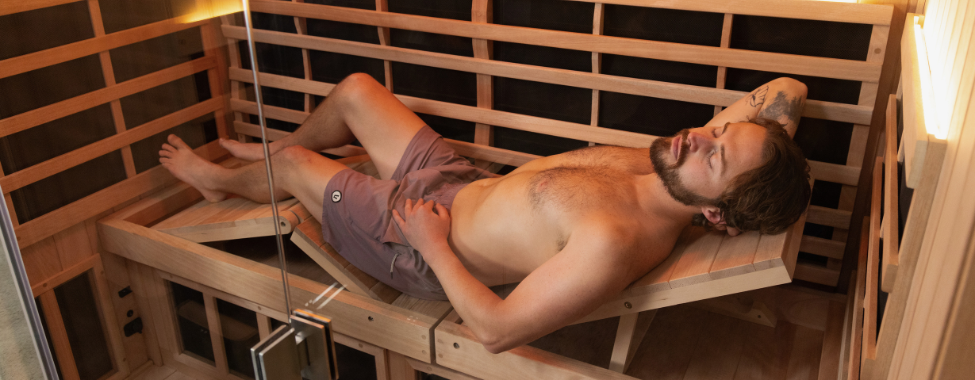
Contrast Therapy FAQs
How often should I use contrast therapy (heat + cold)?
Most people benefit from 3–5 sessions per week, though elite athletes sometimes use daily contrast therapy during high-intensity training blocks. The latest scoping reviews confirm that contrast therapy can reduce soreness, swelling, and pain when used regularly, making it more effective when practiced consistently rather than occasionally. Wellness trends also show that more people are adopting shorter, frequent sessions instead of occasional long immersions, particularly as home infrared saunas and cold plunge tubs become more accessible.
What’s the ideal infrared sauna temperature?
Infrared saunas typically operate between 120–150 °F (49–65 °C), which is cooler than traditional saunas but still effective due to the way infrared light penetrates tissues. Research suggests these temperatures promote relaxation, circulation, and pain relief without the extreme intensity of conventional sauna heat. Most users aim for 20–30 minute sessions at least three times per week. Infrared therapy is especially popular for people who want the benefits of thermotherapy but prefer a gentler heat experience.
What’s the ideal cold plunge temperature?
The optimal cold plunge range is 50–55 °F (10–13 °C), which balances safety and effectiveness for most users. Beginners may start closer to 55 °F, while experienced practitioners sometimes immerse at 38 °F (3 °C). A duration of 1–2 minutes per cycle is common, though many start at just 30–60 seconds. Recent studies confirm that cold immersion in this range reduces inflammation and boosts recovery while minimizing risks of hypothermia or shock. Timing matters: avoid plunging immediately after resistance training if muscle growth is your primary goal.
When should I time infrared sauna vs. cold plunge in a contrast session?
The most common structure is to begin with heat (infrared sauna) for 3–5 minutes, then move into a cold plunge for 1–2 minutes, repeating this cycle three to five times. This order enhances circulation by alternating vasodilation and vasoconstriction, creating the vascular “flushing” effect confirmed in recent studies. For inflammation, many users finish on cold; for relaxation or stiffness relief, ending with heat may be more beneficial. Infrared saunas are particularly effective because their gentler heat makes the transition to cold immersion more tolerable.
Alternating Cold and Heat Therapy
Thermotherapy and cryotherapy both provide many health benefits, whether it’s simple pain relief or aid in treating cancer. To reap the benefits of both, try alternating ice and heat therapy. This will stimulate the production of heat shock proteins and cold shock proteins for muscle recovery and immune system boosts, and can offer a more comprehensive treatment for pain management.
As Duncan sums up, “Contrast bathing can be the simplest way to detoxify, de-stress, and reset the body and mind. Over time, these small, repeated state shifts make us stronger, healthier, and happier.”
Try hot and cold therapy at home by switching between icing and heating for sore muscles, or treat yourself to a spa day by supercharging your body with a visit to the infrared sauna and cold plunge!

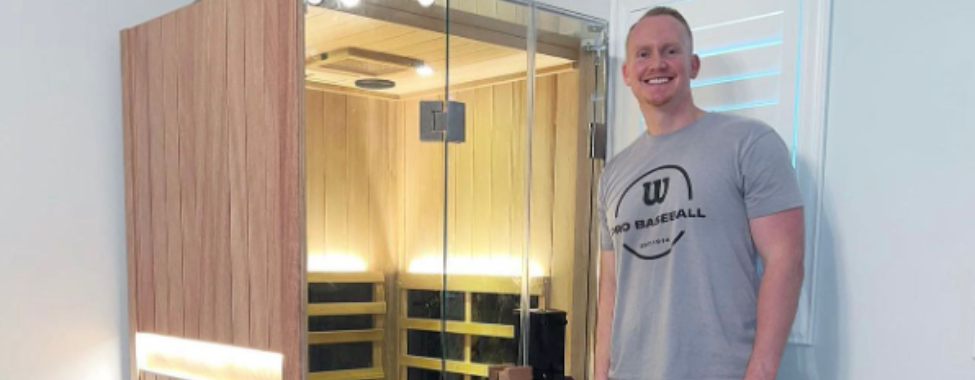
 Canada
Canada Australia
Australia New Zealand
New Zealand Germany
Germany UK
UK EU
EU Ireland
Ireland Malaysia
Malaysia China
China Japan
Japan


